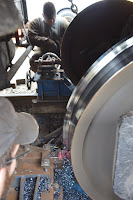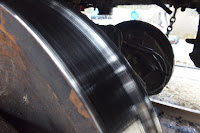Snoqualmie Days
(formerly known as Snoqualmie Railroad Days and Snoqualmie Firemen's Festival) is the annual celebration
of the Snoqualmie Valley, its people, and its culture!, but the
original Snoqualmie Days celebrated a specific and important event – the
arrival of the town’s first fire truck. The festival was
originally organized by volunteer firefighters to celebrate the arrival
of the town’s first Fire Truck in 1939. 83 years later, and we’re still
celebrating!
Before the fire truck, fires were suppressed using two hose carts
operated by volunteers. When a fire was detected, a volunteer would run
to the fire siren (still heard downtown each day at noon) to summon
help. The first volunteer to arrive would grab a hose cart and run to
the fire. Despite best efforts, volunteer firefighter and later fire
chief, Martin Fringer, recalled that even an “average fire meant a
completely burned building.”
By the 1930s, efforts to establish an official fire district and
raise funds for a community fire truck were underway. In March of 1939,
voters passed a $5,000 bonds measure for the purchase of new
firefighting equipment.
“The Church is on fire!”
Before the new truck arrived, however, disaster struck. In the early
afternoon of May 10, a fire started in the downtown church woodshed. The
origin of the fire has never been determined. However, a group of boys
seen running from the woodshed as the fire quickly spread caused
speculation.
Volunteer firefighters and community members immediately jumped into
action. Margaret Hackney rushed into the burning building to save the
hymnals within. Her husband, volunteer firefighter Frank Hackney,
arrived with the hose cart. The “water pressure…was not strong enough to
break the windows to get water in the church” he recalled, “We had to
use rocks.” Despite being dressed in a “nice new grey suit with a grey
fedora hat,” Charlie McGarrigle, an ex-firefighter from Renton and
manager of Puget Power, also ran towards the fire. According to Frank,
Charlie “grabbed the [hose] nozzle and…went so fast I tripped on the
step, and the only thing that kept me up was hanging on to hose.”
Lorna Jean (Wallace) Young was in second grade arithmetic class when
the fire started. Hearing shouts from other students, she looked out her
window and saw “smoke billowing up over town.” Her teacher, Miss Peggy
McKay, insisted students return to their desks and work for the
remaining ten minutes until lunch recess.
“Five volunteer firemen of the Snoqualmie fire department
narrowly missed death when a 400-pound church bell plunged down from the
burning steeple – barely five feet from the firemen.” – Snoqualmie
Valley Record, May 11, 1939
As Young fled home, she was “stopped dead in her tracks,” horrified
at what she was witnessing. As she gathered herself, she heard yelling
come from inside the church. “Then, I saw the men run out just a
fraction of a second before the [church] bell came crashing down.” The
bell was so hot, it was said, that it sizzled in the water that was
collecting on the church floor.
Despite the damage, the church structure was saved and rebuilt six
months later. And the old bell that came crashing down was re-installed
in a new steeple.
Fire truck arrival and celebration
While the church fire was devastating for the community, the arrival
of the new fire truck just two months later was cause for celebration.
On July 29, residents came out to participate in the first Snoqualmie
Days festival, later to be known as Snoqualmie Railroad Days, and then
known once again as Snoqualmie Days! Volunteer firefighters sold red
cardboard fireman hats for 25 cents to raise funds for the department.
Any man caught without a red hat was said to be subject to a 10 cents
fine. The event included a parade, street dance, carnival and even a
water fight between the Snoqualmie and Issaquah fire departments.
“Trains, Timber, Tradition”
Today, Snoqualmie Days celebrates many aspects of the city, its
history, and its community members. The Snoqualmie Firefighters
Association continues their central role in this event by hosting an
annual fundraiser pancake breakfast, raffle, and silent auction. And the
fire truck? It remains a central feature of Snoqualmie Days and
continues to be included in the annual Grand Parade, over 80 years
later.
Historic Snoqualmie Music Crawl
Join us for the opening evening to Snoqualmie Days 2022, tonight, August 19, 2022 on opening night of Snoqualmie Days 2022 for live music &
community celebration.. Since 2019,
the Downtown Music Crawl has been a wonderful addition to our historic
Valley event. The Music Crawl brings life to the historic downtown
district, supporting our brick & mortar businesses as well as
showcasing some of the best musicians the PNW has to offer.
Music Crawl Lineup
The Black Dog Arts Cafe | Erin McNamee | 6 – 7pm
The Snoqualmie Brewery | Fretland | 7:10 – 8:10pm
The Bindlestick | Clothing Optional | 8:20 – 9:20pm
Smokey Joe’s Bar & Grill | Steel Beans | 9:30 – 10:30pm
Firemen's Pancake Breakfast
The Snoqualmie Fire Department’s annual pancake breakfast continues as part of the original event. The annual fund raising Pancake
Breakfast is held by the non-profit organization, Snoqualmie
Firefighters Association (SFFA), in conjunction with the City of
Snoqualmie Fire Department. The Snoqualmie Firefighters
Association’s Pancake Breakfast & Silent Auction helps support
Snoqualmie Fire Department special equipment purchases as well as
community events, public safety & fire education, human services
assistance during emergency situations, high school educational
scholarships in the health & fire sciences, historic preservation
& maintenance of Snoqualmie’s original Engine 1 and support of
charitable organizations within our community. Join in for a yummy breakfast from 7am to 11am at the Snoqualmie Fire Hall.
Grand Parade
The parade will begin promptly at 11 am on Saturday August 20th, 2022. The route will start in Historic Downtown Snoqualmie, WA at the
intersection of Newton Street and Railroad Ave., proceeding down
Railroad Ave. until the end of the route at King Street.
History Comes Alive
Enjoy hands-on history activities with living history re-enactors in
the History Comes Alive area located near the gazebo in Railroad Park!
Other Activities
 There will also be live music at the main stage, a 5K run, lots of vendors, and of course train rides!
There will also be live music at the main stage, a 5K run, lots of vendors, and of course train rides!
Check out Snoqualmie Days to learn more!
Thanks to our friends at Snoqualmie Valley Museum for providing
historical accounts of the church fire and the early Snoqualmie
Volunteer Firefighters. Pancake breakfast image provided by Snoqualmie Firefighter’s
Association.



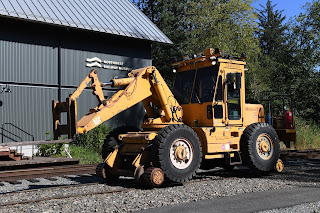




 There will also be live music at the main stage, a 5K run, lots of vendors, and of course train rides!
There will also be live music at the main stage, a 5K run, lots of vendors, and of course train rides!

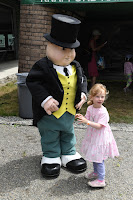
.jpg)

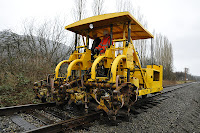

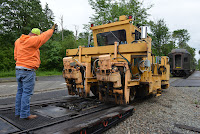








.jpg)
